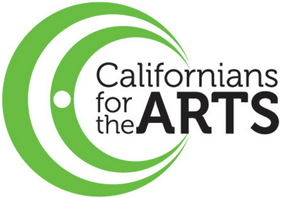

According to the IRS, 38% of employers in the U.S. misclassify workers as independent contractors; so in one out of three cases, the employment classification is wrong
According to SMU Data Arts Research data set dated October 17, 2019
Number of nonprofits arts orgnization in CA: 3,391
Number of independent contractors working at the total number of arts organizations: 131,514
Number of total employees working at the total number of arts organizations: 449,900
Over the course of the legislative session, CFTA and our partner lobbying organization California Arts Advocates worked to educate the legislature on how our industry operates, why it is of benefit to many classifications of artists to remain independent contractors, if for no other reason to retain their intellectual property rights, and how many nonprofit arts organizations can only provide much needed services in their communities on thin margins with artists as independent contractors. We built and drafted our case and with the aid of lawyers and some key legislative staff we lobbied for our exemptions to the Senate labor Committee. In the end, when the bill was signed into legislation by Governor Newsom on September 18th, only one exemption was listed for artists and that was for “Fine Artists”. It is not all that we asked for or wanted but it has opened the door. Many have asked how does the law define “Fine Artists” and it is based on this BLS designation and pertains to visual and crafts artists. In truth, this exemption was included because there are no labor unions for fine artists but there are unions for musicians, performing and teaching artists, and for the most part they support the tenets of the Dynamex decision.
So, where does this leave the arts industries in CA? How will this affect your programs going forward? Will artists lose their intellectual property rights to employers? How many artists are currently employed as independent contractors who will now need to be employees? Will this fundamentally alter how we do business? Many questions are left unanswered and with uncertainty on how to proceed. In the interest of seeking clarity for the field, we will be holding forums to discuss the implications of AB5 and the Dynamex decision (look for these events to be announced soon). We are looking for resources and gathering additional data on what is the broader implication of this decision. What is clear is this is a complicated issue. On one hand, we all want to see the arts and artists valued and uplifted and for workers to be treated justly with fair compensation and benefits. On the other hand, many facets of our industry are built on a seasonal, by performance, by classroom model that does not fit into the structure of the common employment model and many arts providers are small nonprofit organizations that cannot afford to transition everyone to payroll.

Toolkit: Advocacy for Individuals (Americans for the Arts)
Toolkit: Advocacy for Organizations (Americans for the Arts)
Advocacy is what you are already doing; lobbying is a narrowly defined activity with a few easy-to-follow limits.
While all lobbying is advocacy, not all advocacy is lobbying. Advocacy is any action that speaks in favor of, recommends, argues for a cause, supports or defends, or pleads on behalf of others. It includes public education, regulatory work, litigation, and work before administrative bodies, lobbying, nonpartisan voter registration, nonpartisan voter education, and more.
Legislation includes action by Congress, any state legislature, any local council, or similar governing body, with respect to acts, bills, resolutions, or similar items (such as legislative confirmation of appointive office), or by the public in referendum, ballot initiative, constitutional amendment, or similar procedure. It does not include actions by executive, judicial, or administrative bodies.” In the eyes of the IRS, “An organization will be regarded as attempting to influence legislation if it contacts, or urges the public to contact, members or employees of a legislative body for the purpose of proposing, supporting, or opposing legislation, or if the organization advocates the adoption or rejection of legislation.
Sign up to receive the latest news!
P.O. Box 1181
San Bernardino, CA 92402